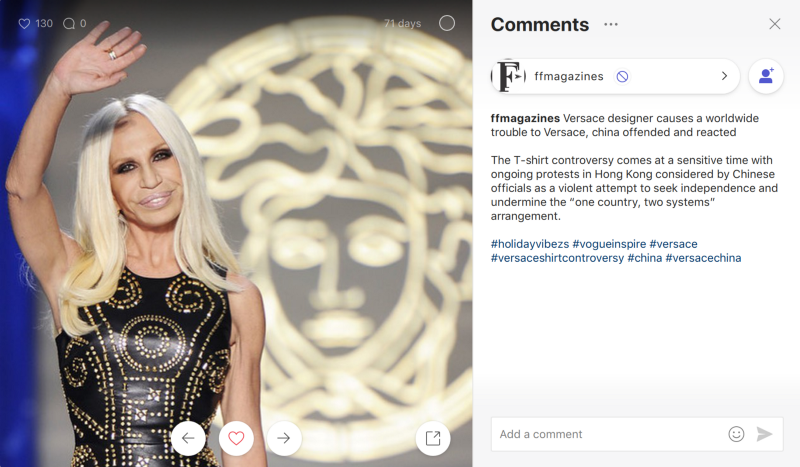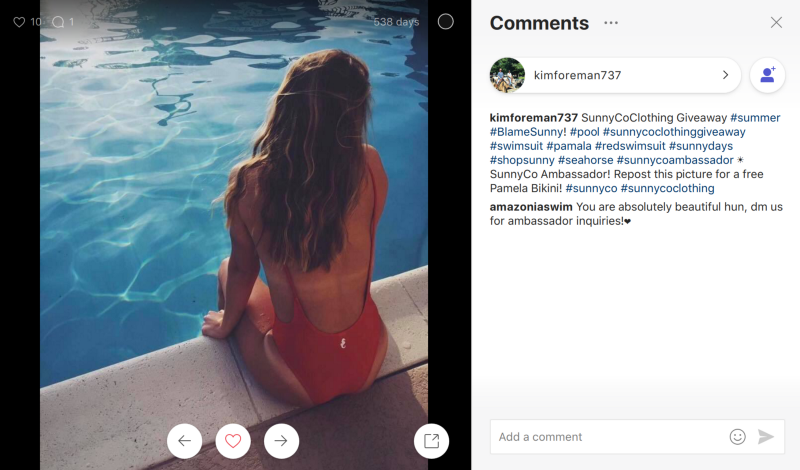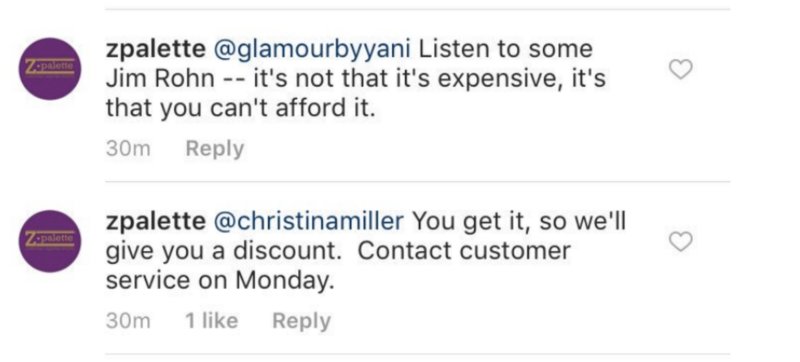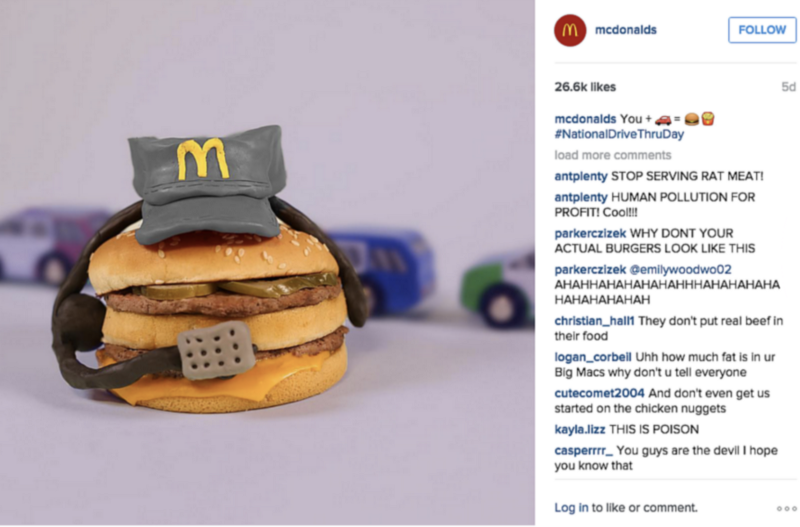On All Hallows' Eve, let’s learn from brands’ mistakes and recall some of the spooktacular fails made by nine companies that had almost turned into real marketing horrors. The Combin team has prepared a compilation of the biggest brands’ epic fails on Instagram. Boo 👻
#1. Versace vs. China
Back in 2019, Donatella Versace had to apologise to the Chinese for the t-shirt design. The Chinese found the design offensive, since it didn't pay attention to their national sovereignty and placed China, Hong Kong, and Macao as three different countries with three various capitals.
'I am deeply sorry for the unfortunate recent error that was made by our Company and that is being currently discussed on various social media channels. Never have I wanted to disrespect China’s National Sovereignty and this is why I wanted to personally apologize for such inaccuracy and for any distress that it might have caused,' said Donatella on her Instagram.

The apology was published after Yang Mi — a Chinese actress and singer — claimed that she would no longer partner with the fashion house as its ambassador in China.
After the scandal, all the t-shirts were removed from sale and destroyed.
💡What lesson to learn? Do a small geography and culture check if you run a business internationally. It’s okay not to know something, but your clients need to feel you respect them.
#2. H&M & the Coolest Monkey in the Jungle
It would appear brands should already learn the lesson about questionable campaigns when it comes to racism, feminism, and body positivity. But, sadly, they keep on being down this road over and over.
2018 started with a social media scandal for the Swedish fast-fashion giant H&M. The whole fuss began when the brand posted a photo of their new collection for kids. Two boys were wearing sweatshirts in the picture, and one of them (African American) had the slogan Coolest Monkey in the Jungle on his sweatshirt.
Customers went furious and accused H&M of racism, lack of cultural respect, and distaste. Blatantly, the clothing brand apologised and removed the sweatshirts from sales channels, but the consequences of the mistake were severe. H&M was globally boycotted, their first-ever store in South Africa was broken into and vandalised, but the scariest of all is that the boy model’s family was bullied and threatened.
#3. Sunny Co. Clothing & Bad Giveaway
In 2017, the swimwear brand Sunny Co. failed to keep up with the promise to give free swimsuits to those who would repost their promo picture and tag them within 24 hours. In just a few hours, they got 3,000 reposts. The brand wasn't ready for such virality, and not every participant got their gifts. As a result, the company was forced to limit the campaign.
Their followers were outraged; they complained and left negative feedback in the comments. Eventually, the brand co-founder apologised, and swimsuits were sent to all the participants of the giveaway.

A clear example of how you shouldn't conduct giveaways on Instagram. If you’re new to giveaways, do your research or hire a professional that will host it right without ruining your business reputation.
💡Suggested read: Giveaways Kill Your Instagram Account (in Most Cases)
#4. Thin & Gorgeous Dolce&Gabbana
Stefano Gabbana is an anti-role model for those entrepreneurs who manage their Instagram accounts by themselves. In 2017, the designer published a post with a shoe in it, which said 'thin and gorgeous'. But not the post itself that was a cherry on this faux pas pie but Stefano’s reaction to people’s comments. Commenters accused Stefano of body shaming and disrespect, and Mr Gabbana, in turn, called people 'stupid', 'fat', and 'full of cholesterol'.
The moral of the story is never to insult your followers, no matter how angry and annoyed you are. This is unprofessional, to say the least.
#5. ColourPop & Their Typos
Beauty brands are not exceptions when it comes to controversial marketing campaigns on Instagram. In 2016, ColourPop released its new line of products for face sculpturing, but the backlash of the campaign was unpleasant. One of the darkest shades of their products was called Typo which was found offensive by their dark-skinned customers.
Their followers got angry with this ignorance and urged other people not to buy the cosmetics.
The takeaway? Work on naming, and don’t let your campaign look racist.
#6. Estee Lauder & Racism
Estee Lauder is another large makeup brand that failed on Instagram. In January 2018, the company launched the promotion of its new foundation line. It was all well and good apart from one thing: among more than 30 shades of foundation, there were just a couple of shades for women of colour and a huge range of pale, light and ivory tones.
Customers got confused and concluded which category of customer is significant for the company.
#7. Reformation & Backstage
Posting your backstage is undoubtedly a form of content you can publish on Instagram. But not the way this clothing brand has done.
Fashion brand Reformation used to post their backstage a lot, and that was okay except for one picture. The brand uploaded a photo from its factory with a white model sitting on the table in the middle and other women toiling in the background.
The debate sparked in Reformation’s comments full of accusations of racism, classism, and even condescension.
#8. Zpalette vs. Customers
And yet another beauty brand failed on Instagram. This time, it was not about their campaign but the way they talked to their customers.
After Zpalette released its new product and uploaded a post about it on Instagram, customers expressed their discontent about its price — $85. But instead of appropriate responses, they got insults. The brand literally called its customers poor and gave discounts to those who supported the brand in comments.

It’s been said too much about developing your brand voice, but this voice should not definitely be like this one. To avoid such a situation, target your proper audience and bother to be polite with people. And if you see that some of your competitors messed up like this, do what BoxyCharm did — the brand posted a publication that said Love and respect.
#9. McDonald’s Doesn’t Talk to People
McDonald’s is one of the largest corporations in the world, and let’s face it: they rarely fail with scandals. And this one is not a scandal, either. It’s just a humble reminder that you should talk to people and respond to their comments on social media. It will not only increase your trustworthiness as a business but will also elevate your engagement rate on Instagram; thus, the platform will show your post to more people.
💡Suggested read: How Businesses Can Deliver Excellent Customer Services Through Social Media
But apparently, back in the day, McDonald’s social media managers didn't know that and decided to leave comments unnoticed.

A takeaway here: always talk to your clients and respond to them, no matter how bad or good you think their comments are. And never claim to provide anything you can’t.
As you see, even big business sharks can fail on social media and put at risk their reputation. Hopefully, these examples will help you avoid similar mistakes in your upcoming campaigns, and the Combin tools are always ready to help you boost your Instagram marketing.

